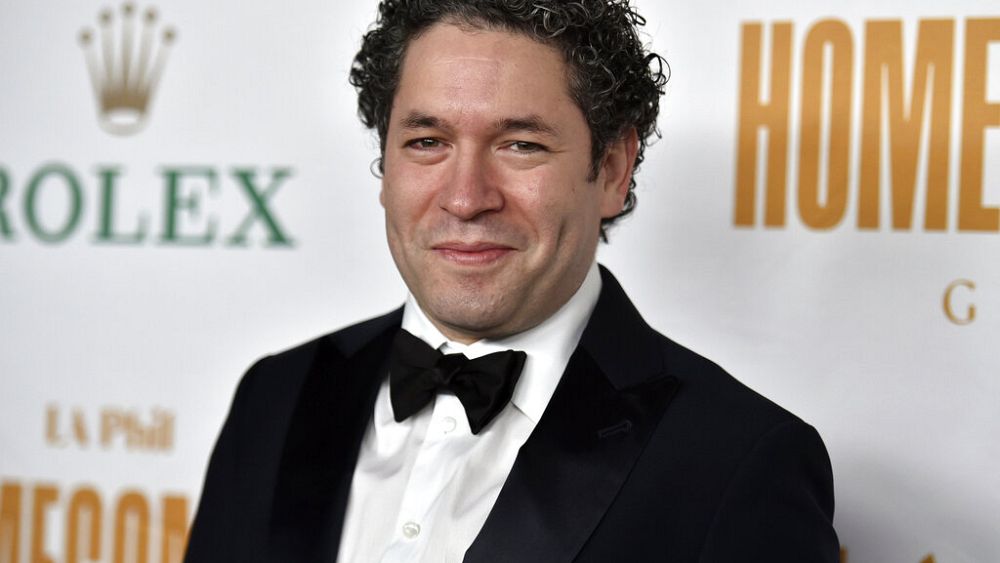NEW YORK — Sonya Yoncheva, a soprano at the top of her profession, worries about classical music.
“My son, if I ask him, he always says, ‘I want to be like Ronaldo.’ And later, if I ask my girl, she will say, ‘I want to be Lady Gaga and Beyoncé,’” the Bulgarian singer explained ahead of Saturday’s new production premiere of Giordano’s “Fedora” at the Metropolitan Opera. “They really don’t associate with the classical music artists. Times are changing.”
In a bid to shape projects and bolster opera’s audience, Yoncheva is launching her own record label.
A Sony Classical artist since 2013, Yoncheva is releasing “The Courtesan” on her own SY11 Productions label, recorded with conductor Marco Armiliato, tenor Charles Castronovo and Italy’s Orchestra dell’Opera Carlo Felice Genova. It will launch on Amazon on Feb. 9.
In a time of dwindling classical sales and releases, she was able to choose the selections and even the cover photo, matters subject to a collaboration on Sony recordings.
“I never really had the chance to guide my project from first step to the last step,” she said. “They were always a very good team with me, but I never felt free.”
In the first close-to-normal season since the pandemic’s onset, Yoncheva sings a revival of Bellini’s “Norma” at the Met starting Feb. 28, then has role debuts as Maddalena di Coigny in Giordano’s “Andrea Chénier” at Milan’s Teatro alla Scala on May 3 and Cio-Cio-San in Puccini’s “Madama Butterfly” at the Vienna State Opera on June 23.
“She is one of our most important artists,” Met general manager Peter Gelb said. “She’s a wonderful actress and a great singer. She is the kind of the artist that the Met needs more than ever these days as we try to make opera more appealing to a broader audience. It’s extremely challenging because the core opera audience is much smaller than it once was.”
Born in Plovdiv, Bulgaria, on Christmas Day 1981, Yoncheva attended William Christie’s “Jardin des Voix” in 2007 and moved to Switzerland to enroll at the Conservatoire de Musique de Genève.
“I wanted to come to the States, but I never managed to have a scholarship,” she said. “At the time, a salary of a normal Bulgarian person was $60 per month, so when you compare this to what has to be paid in a university in the States, it’s just insanely expensive, so for this reason I had to chose Europe. Someone gave me a little envelope with the name of the high school in Geneva, and this person told me ‘You should go there,’ and I said OK.”
In 2010, she became the first woman to win Plácido Domingo’s Operalia competition, and she went on to debuts at the Met and Royal Opera (2013), Vienna State Opera (2014), Milan’s Teatro alla Scala and Paris (2017).
Yoncheva starred in Claus Guth’s 2017 Paris production of Puccini’s “La Bohème,” infamously relocated to a space shuttle.
“This was such a nightmare,” she said, laughing, “but many people are still talking about it.”
She has become more discerning with directors.
“Maybe they will have a concept, OK, but I want them to believe in that and to be honest with it and to explain to me why,” she said. “I must believe in it, and sometimes what is happening is that themselves, they don’t believe it and then they do it to provoke.”
David McVicar is directing “Fedora” in his 13th Met production — a future staging of Ponchielli’s “La Gioconda” is planned — in a fairly traditional mounting. Yoncheva made her role debut at La Scala on Oct. 15 in a modern-dress production directed by Mario Martone, and she worried about being heard.
“The stage director decided to leave the whole stage empty. Me and Roberto Alagna, we were struggling the whole night to find the Punto Callas, Punto Caballé, Punto Tebaldi, Punto I don’t know whom,” Yoncheva said, referring to the so-called preferred stage spots of Maria Callas, Montserrat Caballé and Renata Tebaldi decades earlier.
“I finished the production and I said ‘Oh, my God! What am I going to do at the Met?’ because the Met is maybe three times bigger than La Scala,” Yoncheva said. “I immediately called David, I said, ‘Please tell me there are some walls.’ And he said yes. He showed me pictures, and I was reassured.”
Her male lead at the Met is tenor Piotr Beczala. They have worked together for a decade.
“Our voices our pretty similar,” Beczala said. “I am coming from the lyric corner and she’s coming from the lyric corner, arriving now for a little more spinto repertory.”
While the Met dropped plans to present Yoncheva in John Corigliano’s “The Ghosts of Versailles” and “Madama Butterfly,” she has committed to a new production of Verdi’s “Un Ballo in Maschera (A Masked Ball)” and revivals of Tchaikovsky’s “Pique Dame (The Queen of Spades)” and Cherubini’s “Medea” in Italian.
She lives outside Geneva with her husband, conductor Domingo Hindoyan, whom she met in school. They are kept busy by 8-year-old son Mateo and 3-year-old daughter Sofia, with the entire family traveling to New York for her extended stay.
Yoncheva’s daughter looks at her career somewhat differently than the opera audience.
“I ask her what daddy does and she starts to conduct,” Yoncheva said. “And then I ask her what mommy does, and she says, ‘Oh, mommy, she’s Elsa from ‘Frozen’’ — because I’m dressed like a princess and I sing.”
